
Dear Friends,
Abhay Singh Nahar was born on 30 April 1924 to Prithwi Singh Nahar and Suhag Kumari Devi. Having received his early education at Santiniketan, he joined Sri Aurobindo Ashram as an inmate in 1940 when he was sixteen years of age. He started working in the Atelier, the workshop of the Ashram and in due course of time became its In-charge. One of the most able lieutenants of the Mother, She entrusted him with nineteen departments which he managed very efficiently. When sports started in the Ashram, he became the first flag bearer. In 1977 he resigned from all the departments which were under his charge. On 14 August 2001 he passed away at the age of seventy-seven.
As our humble homage to Abhay Singh Nahar, an achiever par excellence, we have published an interview of his conducted by Raman Reddy of Sri Aurobindo Ashram Archives and Research Department (Pondicherry), two letters written to Abhay Singh by the Mother and a set of his photographs with the Mother in the website of Overman Foundation.
With warm regards,
Anurag Banerjee
Founder,
Overman Foundation
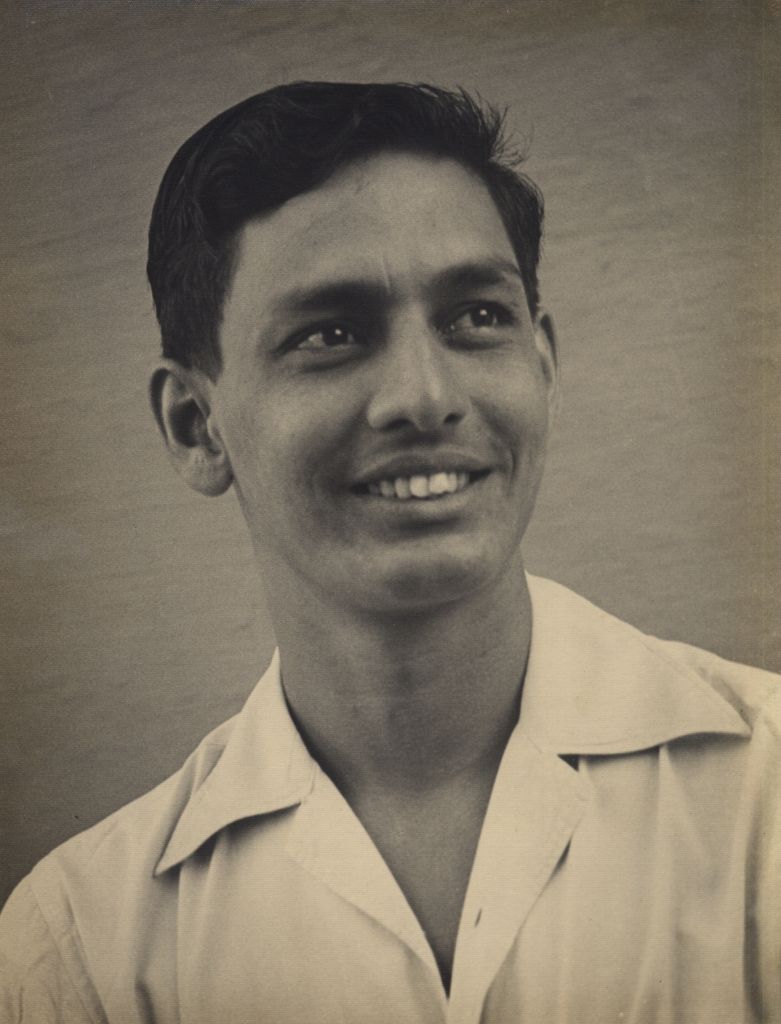
Abhay — The Achiever
Raman Reddy
Abhay Singh Nahar, who was a student in our centre of education from 1943 to 1950, made important contributions to the Ashram’s development over the years.
Abhay Singh Nahar passed away on 14 August 2001. He collapsed in front of the Ashram Laundry gate at around 5 p.m. Though he was rushed to the Ashram Nursing Home in an auto, he didn’t survive the massive heart-attack which was the cause of his death. Strangely, the auto driver didn’t take any payment; on the contrary, the auto drivers’ association brought a big wreath to pay him their last respects. The CITU [CPI(M)] Trade Union put the news of his death on their notice-board and paid workers of the Ashram flocked to see him for the last time. What made him so popular among the local people? What made him so loveable among Ashramites who worked with him in the old days when he was in charge of nineteen (counting small and big, commercial and domestic) departments of the Ashram? The departments under him ranged from the Atelier car workshop (a unit which looks after Ashram cars) to Autocare (a unit for repairing outside cars), Construction Department, to Carpentry workshops at Laundry Land, Machine Shop (formerly in the main Ashram premises in Pavitra’s office, later shifted across the street to present Atelier premises), Smithy, Paint godown, Petrol Bunk on the beach road, Madras car service, Transports Department (by tractor) and Nandanam where he pumped in thousands of rupees to clear the bushes to make a playground in Paradise for the children, and for growing the biggest roses that I have ever seen in Ashram gardens. This he did much against the wishes of is seniors, but Abhay-da (as people call him and even now remember him fondly) was a man of great will-power, and he believed in what he did and wouldn’t listen to anybody except the Mother. Perhaps that’s why he later got into trouble with the Trustees after Mother passed away — he was a king (the Nahars came from a royal family) and could never subordinate himself to anybody else. When he finally resigned under pressure, he handed over the keys to the Managing Trustee, he didn’t cling any more to his seat and embarrass the authorities with threats of retribution or litigation which, I must say, is the true mark of aristocracy. A true king not only rules with authority but also abdicates his throne with dignity.
When I started to work in Atelier in 1978, Abhay-da had already left the scene and the next generation had taken over the reins. But the stamp of the previous years was strongly there — the incredible array of threading taps (every thread of every size was there); drills (from 2 mm to 2 inches with all the sizes in between, metric and inch); the well stocked spares (after a few years we ended with spares of cars that had disappeared in the market); and lastly the measuring tools (the micrometers, verniers, compression testing gauges, wheel alignment equipment, etc.). The small portable reboring machine fascinated me above all. The Ashram was the first to do engine reboring work in Pondicherry and we continued to do it until the eighties, until the new recruits (to the Ashram) didn’t have the patience or the skill to learn this difficult work. Abhay-da did this reboring work himself before passing the responsibility to Subodh who became the reboring expert in the years to come. Then there were the few drivers who had survived the strike that followed Abhay-da’s resignation. They never stopped being nostalgic about the good old times. “Those were the days when there were a dozen drivers and we had so many vehicles — cars, buses, vans, tractors — with plenty of incentives. Now…”, the driver generally finished with a gesture of despair at the present management. The Ashramites also remembered him fondly; I never heard a word of criticism against him in the fifteen years that I spent in the workshop. What made him so large-hearted that he could accommodate practically everybody under him, paid or voluntary workers, technical or non-technical staff, diligent or lackadaisical Ashramites? What made him succeed so well in the heyday of the physical growth of the Ashram in the sixties? When I asked him this question indirectly, he recollected those early years of the Ashram. He recalled how incapable he was when he settled here in 1940:
Abhay Singh : I had not done any study, I had not even passed matriculation when I came here. I did not even know how to speak well. I told Mother, “I like you, will you keep me?” That is how it started. She told me to work in the workshop where lathe work was being done. At that time there was a very old lathe; nowadays those machines are obsolete.
Raman : This was when Atelier was in the Ashram compound?
Abhay Singh : Yes, Ashram compound, I am speaking of that period for the present. So I was working, cleaning old cars — there was arrangement for washing them, a pipe was kept there. And then making shutters and other things for Golconde; I was helping as a payya would. We had a very good team then.
Raman : What was your age at that time?
Abhay Singh : I was sixteen. I was born in 1924, so in 1940 I was sixteen. But I was coming here from the age of eleven. I came in 1935. So from that time I am in the Ashram. I was doing whatever work was given to me. Pavitra-da would call me to work in his laboratory where we were making tooth powder, face powder, blue water for eyes and hair lotion which Mother used to give to Nolini-da and other people. Then pastilles, that is lozenges, which Sri Aurobindo used to take. For Mother, there was another type. We used to make them, Sujata and myself.
Raman : How long did you work as a payya?
Abhay Singh : Number of years…
Raman : Four to five years?
Abhay Singh : Oh, more! Then one fine morning there was some trouble between Mrityunjoy and Pavitra-da. Pavitra-da called me upstairs to work and Mrityunjoy called me down to the workshop. I obeyed them quietly. Then Mother came and called me upstairs immediately. She said: “You are going to listen to Pavitra and not to Mrityunjoy.” So when Mrityunjoy left the workshop, Pavitra-da was in charge of it.
(Abhay-da was given full charge of the workshop by the Mother when Pavitra became the Director of the Centre of Education. After a few years, the workshop in the main Ashram compound was turned into Pavitra’s office and Abhay-da shifted his office to the present Atelier premises. How did he spread his wings?)
Raman : It was always a period of expansion from 1965 onwards, wasn’t it?
Abhay Singh : In 1965 it was always expanding.
Raman : Were you expanding with the consent of the Mother?
Abhay Singh : I will give you an example. There was a shortage of water in Pondicherry, so we had to supply water. I was given the job of supplying water to a few people. After that, the number of people increased to so many that the tractor had to be used the whole day in order to supply water. So we wanted one trailer and another tractor. I asked Mother for it. She said, “Yes, you can have.” I got a second-hand one and with that we used to supply water. So things went on like this. It was…
Raman : As necessities arose…
Abhay Singh : That is how the Ashram has grown. Somebody takes interest in a particular thing and he is given encouragement. The petrol station is another example. A man comes from Madras and asks us, “We are willing to give you this petrol station. Will you take it?” I didn’t even know those people. I was never even interested. But Mother said, “Yes”. So this is how things happened. Then I hear from a particular person that I don’t listen to Mother and Mother didn’t want the petrol station, that it was me who was insisting on taking it. So I wrote to Her saying that I was interested in it only if Mother was willing to take it; otherwise I was not interested.
Raman : But you wanted it also, you wanted to expand.
Abhay Singh : If it came, it was okay because that was to be our first commercial venture.
Raman : I see, the petrol station was your first commercial venture.
Abhay Singh : That was our first commercial venture and for three or four years, it didn’t run in profit. It was very difficult and Mother said no for the money. So I had to start the petrol station without any money. At that time the price of petrol was not much; nowadays it is much more, today it is different. We were doing Laljibhai’s construction, so he said I could take 10,000 from there. I could return the money when the house would be built. There was another gentleman, Madanlal Himatsingka; he also helped me with 10,000 or 20,000. At that time, 30,000 was more than enough. Madhav Pandit also helped. He said he could arrange for a loan. When I told Mother about it, She was so angry about having to take a loan. Then, finally, this alternative arrangement was found.
[Another example:] We had a lorry. I was unable to keep the lorry busy. So I asked Mother, “Can we do some construction work?” Mother was very angry with me, “Why are you organizing another construction department?” — “Mother, I didn’t know what to do with the lorry. So I thought of making good use of it.” After a few months, suddenly, Mother tells me, “You wanted to do some construction work. You can start now. You see, these [Ashram] boys, when there is some construction, they go away to Group [for physical education]. You can’t leave like that during concreting.”
[Yet another example:] One fine morning, She wrote a letter to me saying Rishabhchand required a little rest. So I could take up his work of Furniture Service. Then She told me about transport, “You are sending the tractor to Cazanove, why not send it to Le Faucheur at the same time? Otherwise it has to go unnecessarily twice.” The result was that I was able to do twice the work in this way.
[Miracles happened:] Agriculture had started [in the Ashram Farms where tractors were sent to plough the fields]. One tractor was given by Laljibhai. Then one was purchased from Madras. Then, in the meantime, some more land had come, so we wanted another tractor. Mother told us to write for another tractor, so we wrote to Trichy. We placed the order, and after some time, one or two months later, the reply came saying we could get the tractor. Mother said, “I don’t have any money.” I said, “Doesn’t matter, Mother, we still have not committed ourselves.” So we wrote a letter saying that we were not interested at present. But next day, She comes and tells me to go immediately to Madras and see one gentleman. “Tell him that Mother wants this amount for this tractor and he will say ‘Yes’ or ‘No’.” I went there and told him and he said, “Yes”. So I came back and told Mother immediately. Mother said, “Go to Trichy and get the tractor.” When I went there I saw they were just going to allot the tractor to somebody else but they said, “You take it.” So this is how things happened.
From Madurai, one Mr. Ramachandran, a top man there, came here and saw how things were kept and issued. He was astonished at the organization. He asked me whether I had been to America to learn all this. But it had come automatically, and then we used our common sense and had our own way of doing things. The parts were arranged by car and then by different sections, gearbox, engine etc. That was easy. And then we used to have one extra engine. So when there was a breakdown, we simply replaced the engine. Like that we had 15 days time to make the engine ready. The advantage at that time was that we had many Austin cars for which spare parts were available. Similarly for the Ambassador, we kept everything extra. The result was long life. At that time, the body of the Ambassador was much better than what it is now.
Raman : Who bought all those instruments? All those taps and dies of various sizes?
Abhay Singh : They were bought when the workshop was in the Ashram. There were three or four almirahs in which Pavitra-da used to keep his things. The same things were arranged in the long store upstairs in the workshop. They were well organized so that you could get immediately whatever you wanted. A lot of helpers were there to do the work.
At the time, in Pondicherry, there was no other workshop. So we had to get things from outside. Whenever there was an exhibition, I used to go and see it and then ask the Mother, “Can we buy these instruments? We don’t get them here.” So that is how I got that reboring machine. Subodh used to work on it.
Raman : But you started the reboring work.
Abhay Singh : Reboring was started by Vishwanath-da, he showed me how to do it. I can’t take the credit for myself.
(Abhay-da’s strength lay in pooling together the men and resources of the various departments under him. He redistributed freely the money from one department to another with the Mother’s sanction. When he suggested once to the Mother to separate the departments under him, Mother disapproved of the idea, pointing out the advantage of keeping them together.)
Raman : One thing that strikes me is that there was constant expenditure and Mother had hardly any money and yet somehow money was coming from here and there. And you were building a perfect workshop, somebody else was building…
Abhay Singh : I will tell you. Cars were coming and going from Madras. We were charging Rs. 80 for the trip to the airport. Sometimes we earned up to three or four thousand rupees. We were spending that money with Mother’s consent. Nothing was done simply at my own whim though She gave us the freedom and the trust. We could be very unscrupulous if we wanted because She simply gave us the money without any accounts. We had the full freedom to misuse. But I tell you, not a single paisa went unaccounted for. Never. Even in the use of cars, I had the full freedom. Once I went to Bangalore and Mysore without telling Mother, I told her after coming back.
I used to take advantage of the money that we had not spent. Mother used to give me every week 5000 rupees for petrol and other things. So the money we had not spent would accumulate and after two or three months, it would become 30,000. So when She couldn’t give me the money, I would ask Her, “Mother, I have 30,000 lying with me, can I use it?” “That would be very good” and things went on until the 30,000 became nil.
I started Nandanam garden. Lots of money were needed. In the rainy season when there is less transport work, I used to send the tractor there to clear the jungle. The debris from demolished houses was used to make the road. Bhaduri-da was there. He was a genius. I told him, “Look here, you have the brain. I am giving you this 765 [Massey Ferguson] tractor, utilize it to clear the jungle. Do whatever you like, don’t ask me how to do it.” So he tried two times, three times, and finally the roots were coming out like butter. For any emergency like that, I used to ask Bhaduri-da. He was there on one side and Vishwanath-da was there on the other side and it was going on like that.
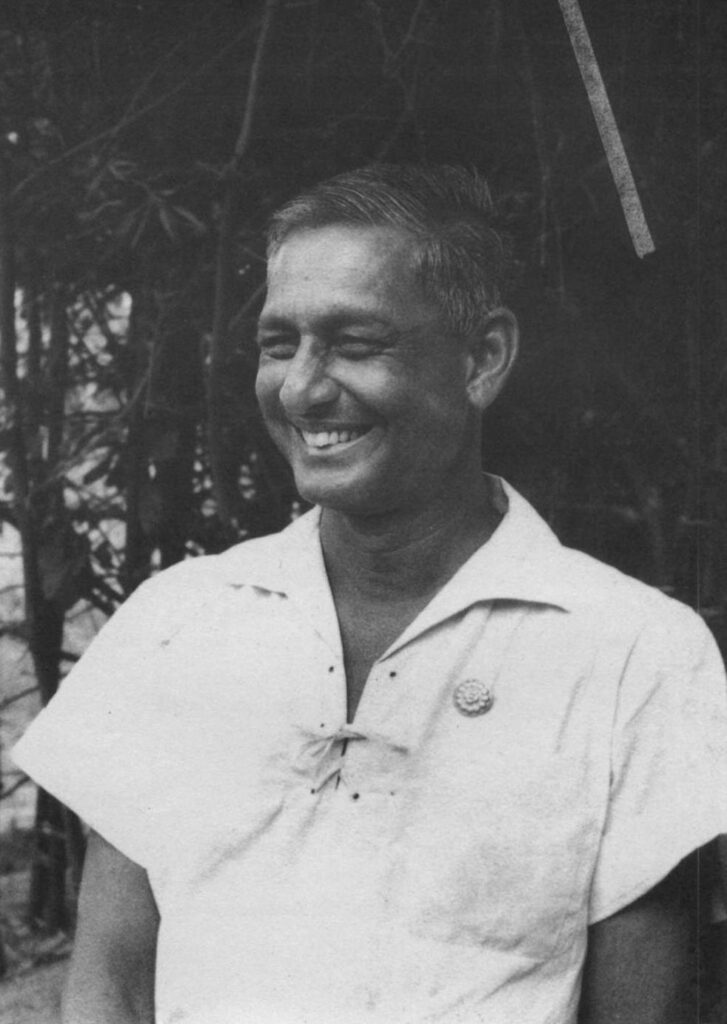
The new generation hardly knows about Abhay-da because he kept himself aloof from Ashram life for a quarter century, 1977—2001. Not many know or can even visualize his rise to eminence in the management of the technical services of the Ashram, because every single department formerly under him is now a separate department with its own management, and I suppose, with its own difficulties of management. It is common knowledge, given the very special circumstances, how difficult is management in the Ashram. Of course, the Mother was physically present in those days, which made all the difference, but Mother also needed instruments to do Her work. As an elderly friend of mine remarked, “Mother brought her own team to do her work.” He was not referring to the very old guard — Nolini, Pavitra, Amrita and others — who are known to have been with the Mother through many lives, but the later batch which was responsible for the more external growth of the Ashram. There can be no doubt that Abhay-da was a member of that team.
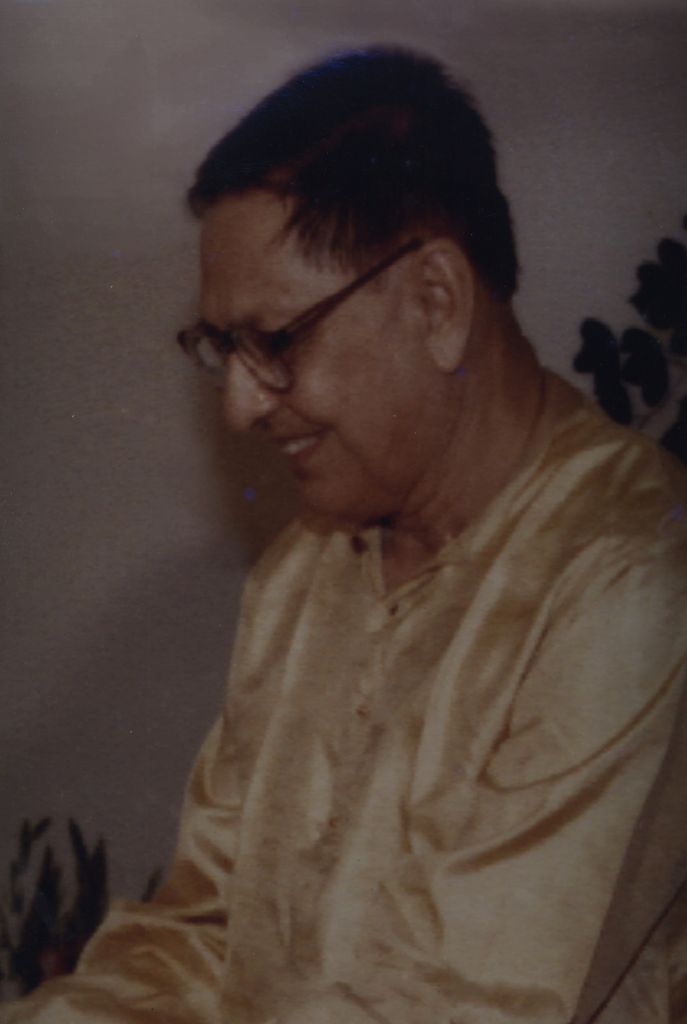
Two letters of the Mother written to Abhay Singh Nahar
[1]
28 May 1963
Abhay Singh, my dear child,
I am absolutely satisfied with your work which is excellent from all points of view, and I have no intention of using the workshop for the defence work.
Moreover you are absolutely right to write to me for confirmation when someone (whosoever be it) speaks to you in my name.
Thus all is well and there is no need to torment yourself.
Remain calm and confident; all is well.
With my blessings.
Mother
[2]
17 December 1964
Mother,
I will not refuse and I have never refused to do any work given me by the Mother.
The day I will know I have done this I will surely not be here any more.
With my pranam,
Your child,
Abhay Singh
?
Who told you that?
I never told anyone and I never thought even for a moment that you have refused to do my work.
On the contrary, I know that if I ask you to do something you do it immediately and that is why sometimes I hesitate to ask something when I know that it will be one more expense which I cannot always meet.
Be peaceful, my child, I have confidence in you and know your faithfulness.
But if you want to have peace do not listen to what people say.
Blessings.
Mother
Some photographs of the Mother with Abhay Singh Nahar taken on various occasions:

The Mother cutting the ribbon at the opening of the Sportsground on 1 July 1951. Abhay Singh Nahar is seen in front of the Mother holding the flag.

The Mother after cutting the ribbon at the opening of the Sportsground on 1 July 1951.

Abhay Singh Nahar and Light Ganguly with the Mother on 1 July 1951 at the Sportsground.

Same as above
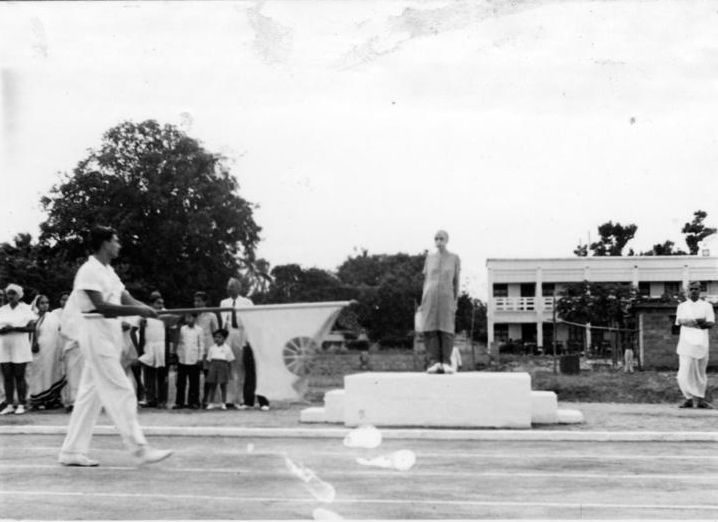
Abhay Singh Nahar as the Flag-bearer in front of the Mother on 9 January 1952.

The Mother with Udar Pinto, Abhay Singh, Bhanu, Gita, Laxman, Gangaram, Ramraj, Motiben and Kapila in 1953.
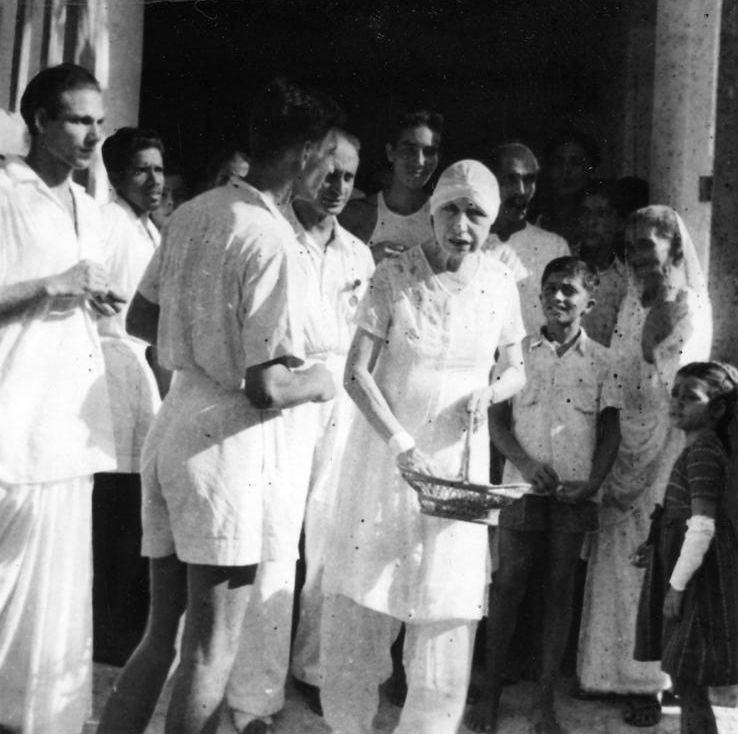
The Mother with Noren Singh, Abhay Singh, Udar Pinto, Suresh, Nolini Kanta Gupta, Gangaram, Laxman, Ramraj, Motiben, Kapila and Bhanu in 1953.
The following photographs were taken on 12 October 1954 at the Atelier:
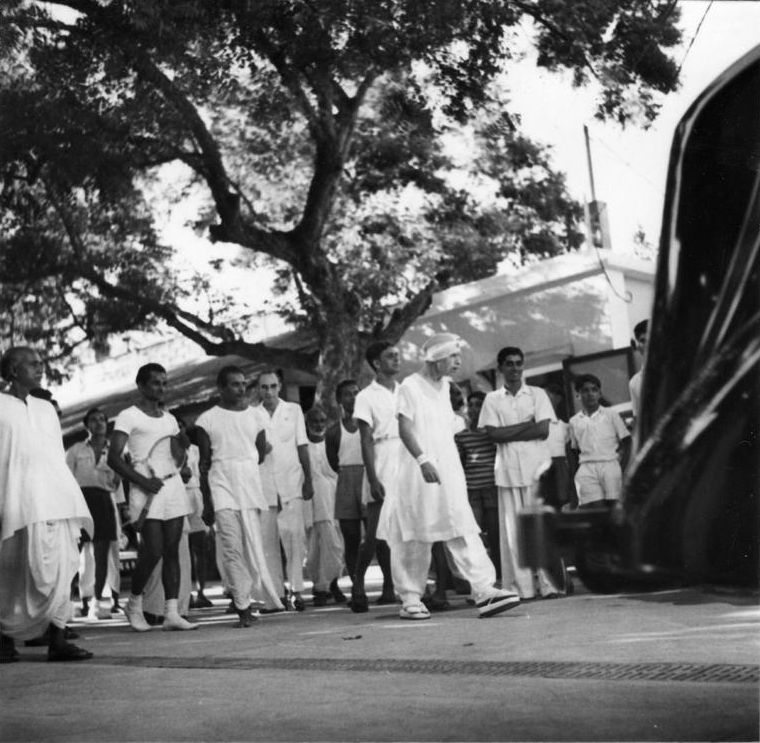
The Mother with Jyotin, Pranab Kumar Bhattacharya, Dyuman, Pavitra, Chandrakant, Khirod, Abhay Singh Nahar, Laxman and Ajay.
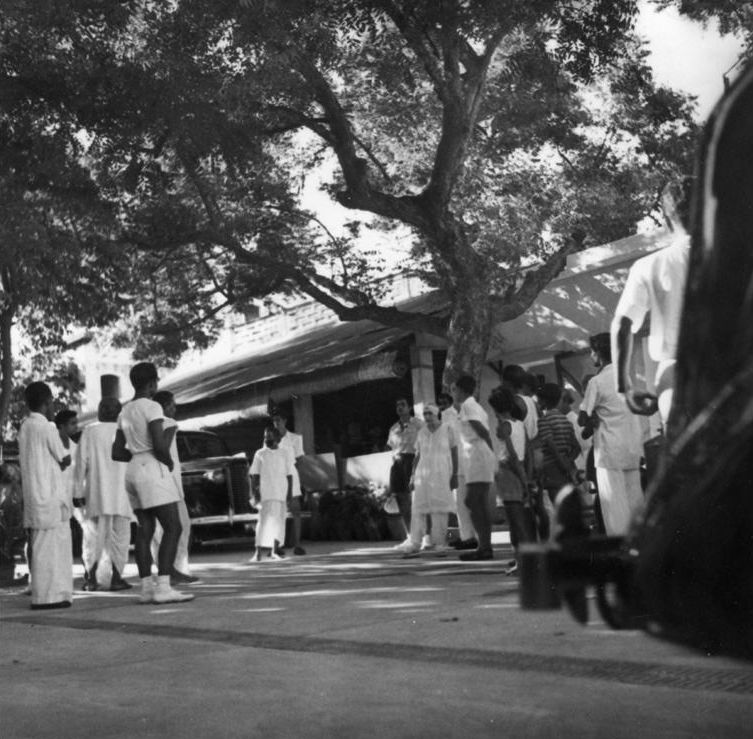
The Mother with Chandrakant, Dyuman, Pranab Kumar Bhattacharya and Abhay Singh Nahar.
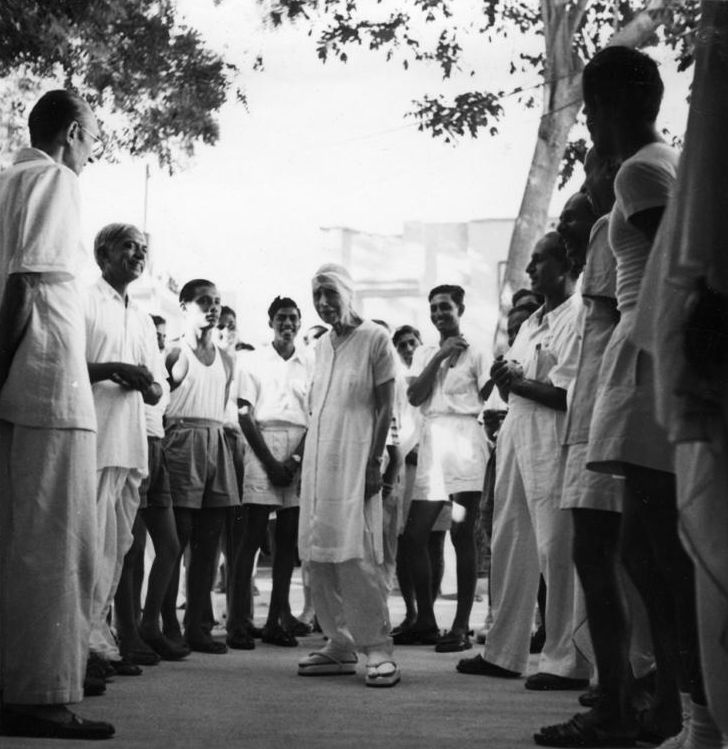
The Mother with Pavitra, Bula (Charu Chandra Mukherjee), Abhay Singh Nahar, Udar Pinto, and Prabhakar.
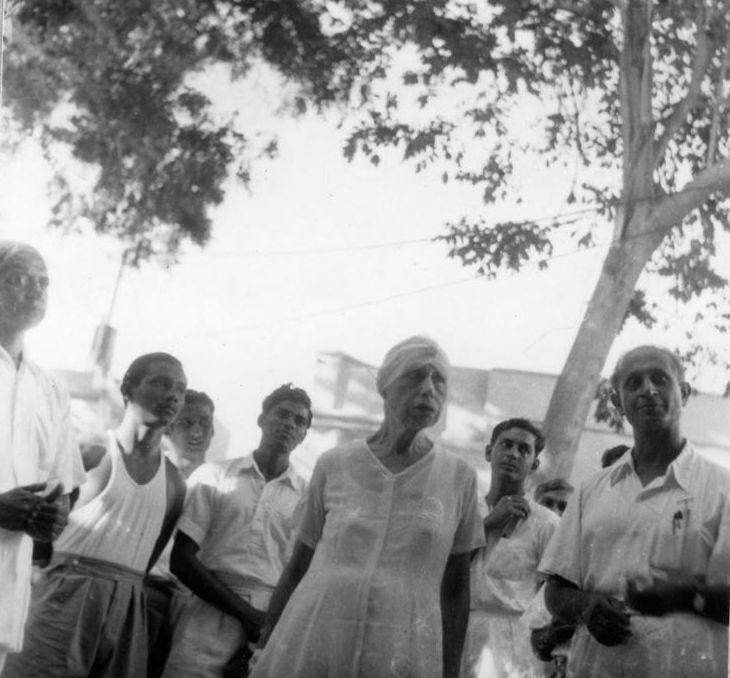
The Mother with Bula, Sudhir, Udar Pinto and Abhay Singh Nahar.
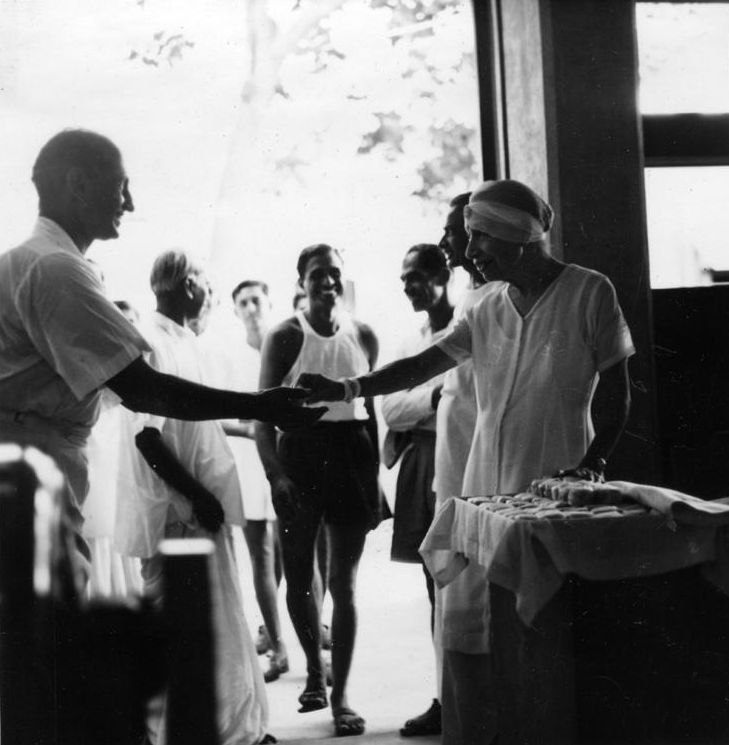
The Mother with Udar Pinto, Bula, Abhay Singh, Chandubhai, Louis and Dyuman.

The Mother with Chandrakant, Amulya, Dyuman, Abhay Singh Nahar, Vishnulalit, Suresh J and Ashok G.
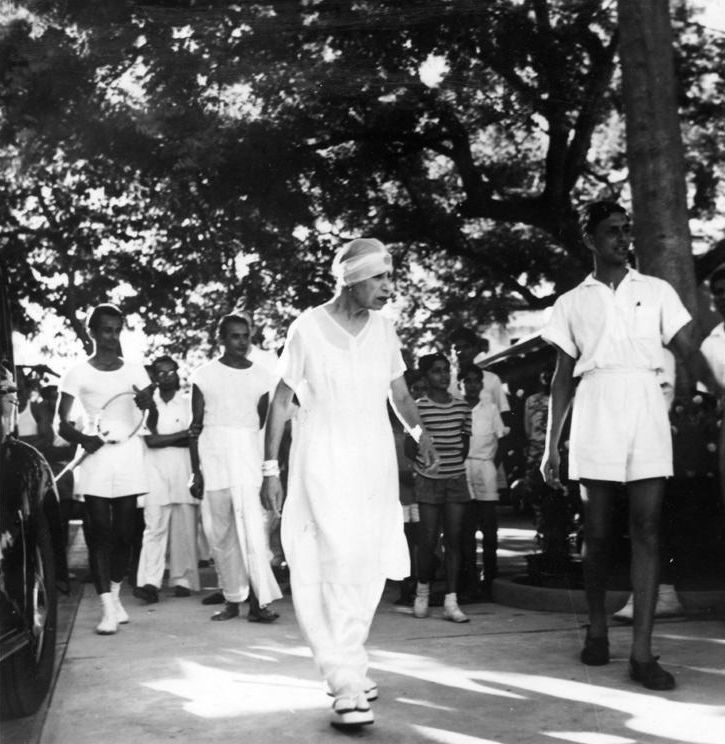
The Mother with Abhay Singh Nahar, Chandrakant, Amulya, Dyuman, Laxman and Ajay.
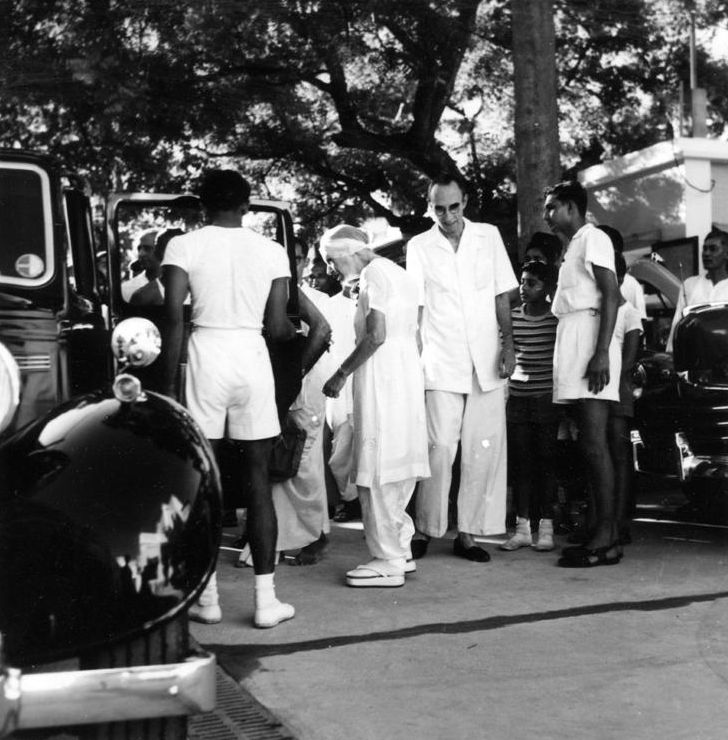
The Mother with Pavitra, Abhay Singh, Sushil, Chandrakant and Laxman.
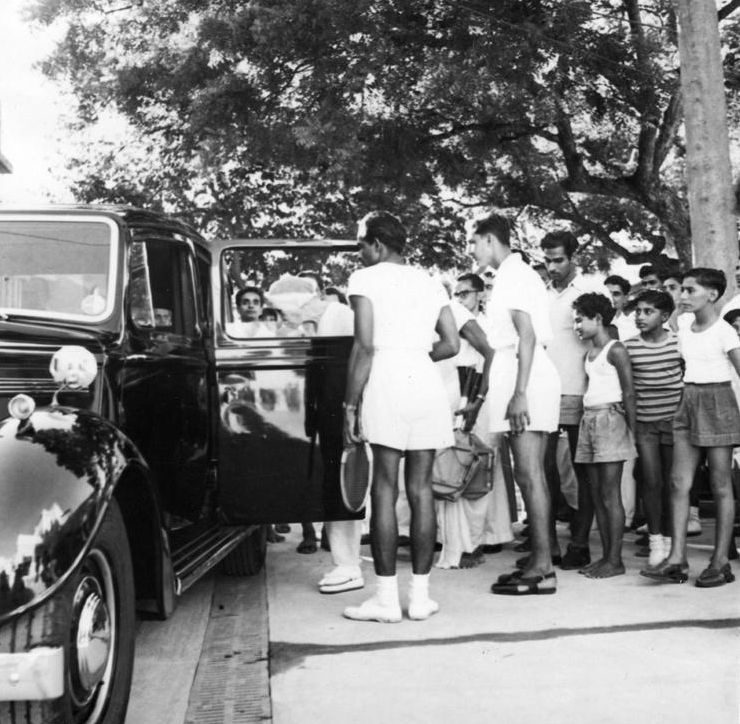
The Mother with Abhay Singh, Sumantra Kothari, Chandrakant, Amulya, Vishnulalit, Laxman and Ashok G.
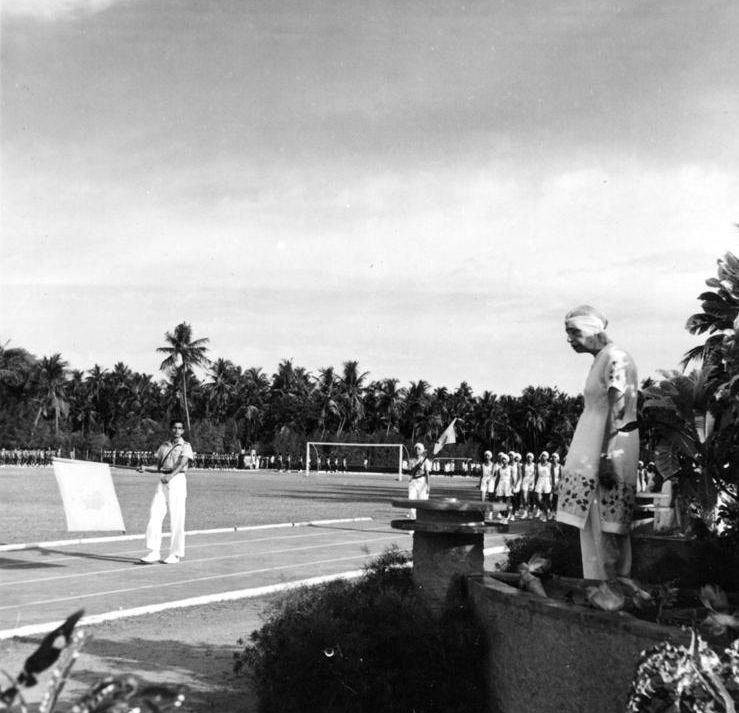
Abhay Singh Nahar with the Mother on 1 July 1954 at the Sportsground.

Abhay Singh Nahar with the Mother on 1 July 1955 at the Sportsground.

The Mother at La Faucheur on 5 December 1959 with Vishwanath, Madanlal, Arun, Barin Ganguli, Gauri Bhattacharya, Pavitra, K. Amrita, Manoranjan Ganguli and Abhay Singh.
The following photographs were taken in March 1960 during the Mother’s visit to the Atelier :
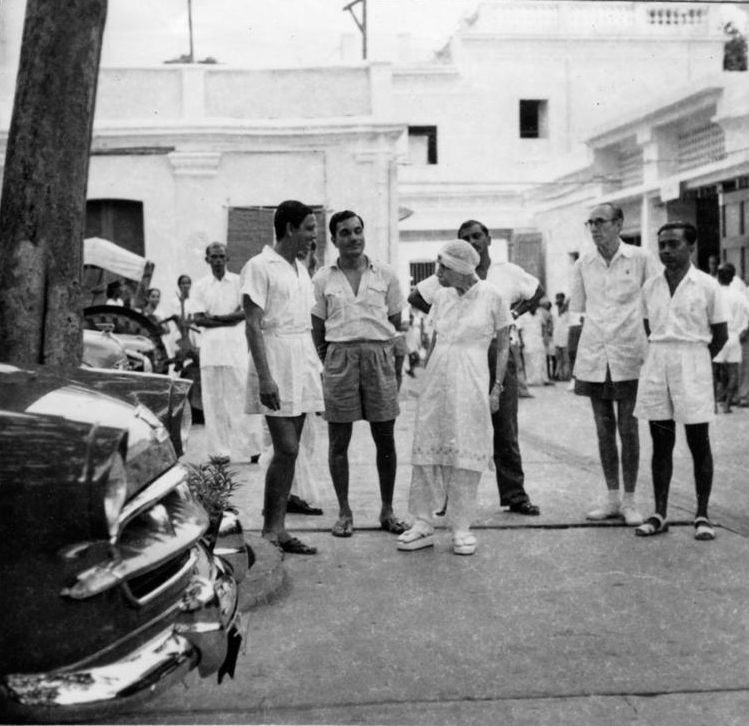
The Mother with Kishore, Abhay Singh, Pranab Kumar Bhattacharya, Dayakar Reddy, Pavitra and Amiyo Ganguli.
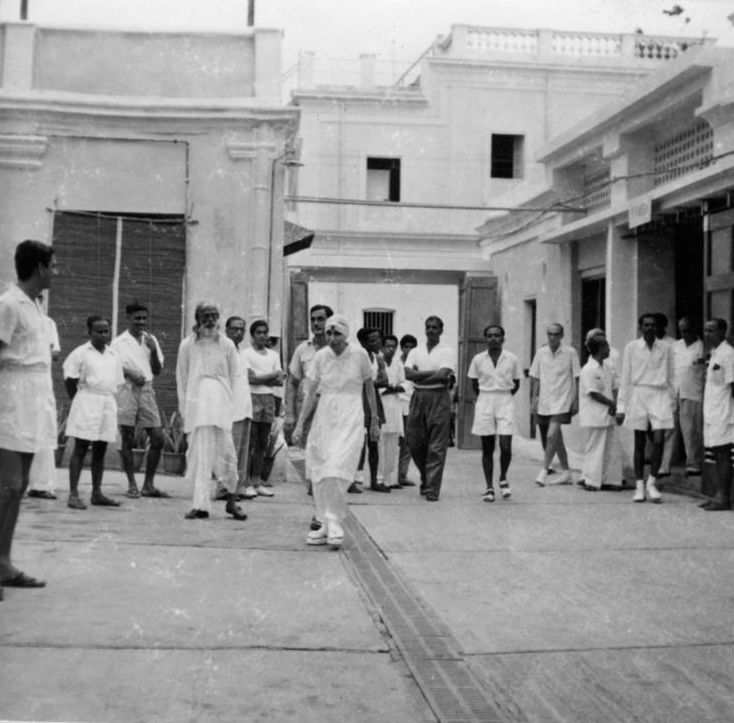
The Mother with Abhay Singh, Charu Chandra, Laxman, Pranab Kumar Bhattacharya, Dayakar Reddy, Amiyo Ganguli, Pavitra, Pradyot Bhattacharya, Udar Pinto, Vishwanath, Sudhi and Madanlal.
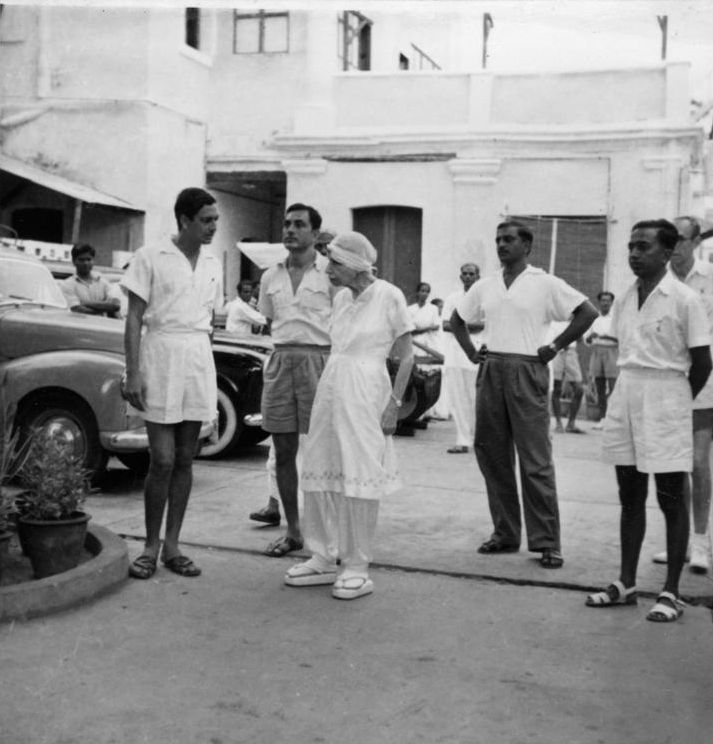
The Mother with Abhay Singh, Pranab Kumar Bhattacharya, Dayakar Reddy, Amiyo Ganguli and Pavitra.
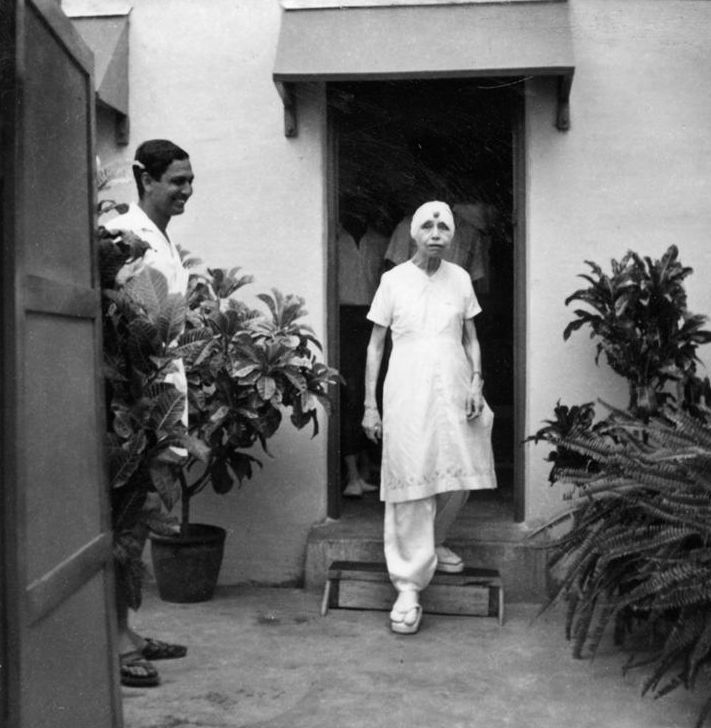
Many thanks Anurag for bringing alive through remarkable picture closely associated with dear Abhay singh da’ life and work – it is a vivid visual history in a sense of the early years of the Ashram – Raman Reddy has done excellent work through his perceptive questions which has – indeed – brought the revealing responses from Abhay – da with disarming simplicity – I had the privilege of knowing him personally – When once I expressed my desire to listen to Dilip da’s immortal bhajan ” Brindabaner Lila ” he was only too happy to take me upstaires to his well appointed cosy room inside the Ashram to make me listen to the song – He led a silent unassuming and dignified life entirely dedicated to the the service of the Divine Mother – there was something soft and sweet about his personality – a kind of unassertive royalty which spoke of his distinguished lineage –
Surendra S Chouhan SAICE ‘ 69
Each dip in such flows of memory enrich us with new gems eloquent with the ins and outs of A God’s Labour.
Prithwindra Mukherjee